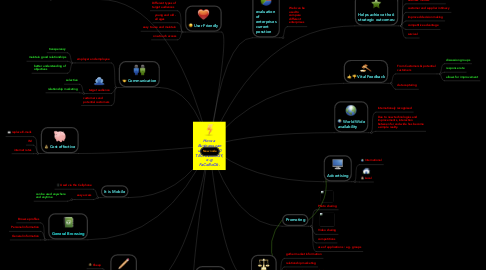How a Business can use WEB 2.0 TECHNOLOGY, e.g FaCeBoOk.
作者:Shahiel Chetty


1. Communication
1.1. employer and employee
1.1.1. transperancy
1.1.2. maintain good relationships
1.1.3. better understanding of objectives
1.2. target audience
1.2.1. selective
1.2.2. relationship marketing
1.3. customers and potential customers
2. IM - Instant Messaging
2.1. Cheap
2.2. personal and private messaging
2.3. non time consuming
3. It is Mobile
3.1. Used via the Cellphone
3.2. easy access
3.2.1. can be used anywhere and anytime
4. Cost effective
4.1. replace E-mails
4.2. IM
4.3. internet rates
5. User Friendly
5.1. Different types of target audiences
5.2. young and old - all ages
5.3. easy to use and maintain
5.4. one-touch access
6. Creates new business opportunites
6.1. new business ideas come into being
7. General Browsing
7.1. Browse profiles
7.2. Personal information
7.3. General information
8. New node
9. STUDENT NUMBER : 10009541
9.1. CHETTY. S
10. Advertising
10.1. International
10.2. Local
11. World Wide availability
11.1. Internationaly recognised
11.2. Due to new technologies and improvements, interaction between far and wide has become a simple reality.
12. Vital Feedback
12.1. From Customers & potential customers
12.1.1. discussion groups
12.1.2. response rate
12.1.3. allows for improvement
